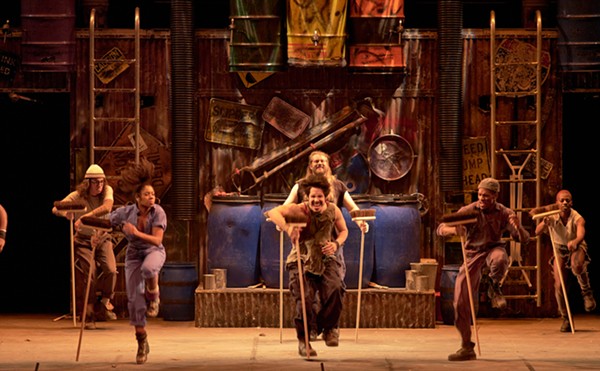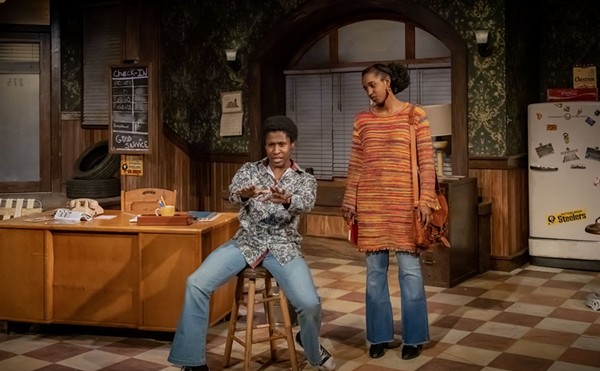What is Good is Given Back, at Zygote Press, is a quietly intense show that meditates on the art of printmaking. It also includes works that aren't exactly prints, bringing leverage to bear on the questions that the medium raises about image and substance, and the illusory, multiple nature of identity.
Noel Reifel is one of Ohio's most distinguished masters of relief and intaglio processes. His work is included in the Cleveland Museum of Art collection and has been shown in exhibits from China to Mexico. For the past 34 years, he has been an inspiration and guiding presence for several generations of artists at Kent State University. One of his former students is Zygote's own Anthony Bartholomew, the artist-run facility's shop coordinator. These days, the versatile Bartholomew teaches alongside Reifel at KSU, also working as a screen printer at Jakprints, one of Cleveland's busiest commercial print shops. The Zygote show is the first time he's shared gallery space with his mentor, and the title of the show evokes the special threefold nature of their teacher-pupil-colleague relationship.
Although Bartholomew says they didn't view or discuss the work they were planning to show, the two artists seem to respond to one another, carrying on a visual conversation about form and the beginnings of expression. Both are concerned with simple core gestures and effects of mark-making — the bold, bare fact of an engraved line and the way a line develops space around itself. Reduced to such elements, a print is a kind of theater or laboratory, where a transcendent action balances its sharp presence against a field of mere potential.
Reifel develops his ideas in four series of crisply printed black-and-white prints, deliberately inked for a one-time effect. Etched white lines swing out, describing partial geometric forms that cut across a heavily inked background. Sometimes the background is a steady-state, formal static made by the smooth rubber roller as it leaves small, puddled areas of ink. Elsewhere, repeated passes of the applicator sketch a series of overlapping planes. Doubleness is another theme in these works, a metaphor for printmaking. Just as the artist leaves the imprint of his action on the materials he uses, the hard, raw plate produces its mirror image, pushed into fiber. One incarnation leads to the next; with each translation, a new text comes into being.
Bartholomew's screen-print-on-board works consist of amorphous areas of color surrounded by white paint, complemented by incised lines. Like Reifel's, these playful works are all about the idea of transformation — how contrasts in color and texture interrupt and contradict one another, enlivening space while they map our own innate preoccupations. Where do we come from? How do we change? Bartholomew and Reifel pose eternal questions with economical grace and an almost athletic precision.












